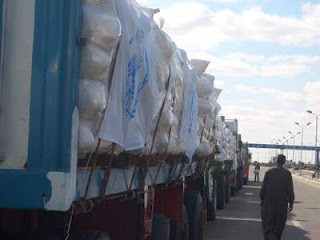-
World-Renowned Inventor Dean Kamen Talks Water, Energy
›May 20, 2009 // By Rachel Weisshaar “If you tell the world you’re going to do something and they go, ‘Yeah…?’ it’s probably that you’re making an incremental change in something that the world is already doing reasonably well,” said renowned inventor Dean Kamen at a May 2009 meeting co-sponsored by the Wilson Center’s Environmental Change and Security Program and Program on Science, Technology, America, and the Global Economy. “I’d rather work on the really big stuff.”
“If you tell the world you’re going to do something and they go, ‘Yeah…?’ it’s probably that you’re making an incremental change in something that the world is already doing reasonably well,” said renowned inventor Dean Kamen at a May 2009 meeting co-sponsored by the Wilson Center’s Environmental Change and Security Program and Program on Science, Technology, America, and the Global Economy. “I’d rather work on the really big stuff.”
His track record proves it: He holds more than 400 U.S. and international patents, and his most famous inventions include an implantable insulin pump, a portable dialysis machine, and an artificial arm, as well as the Segway personal transporter.
Kamen now seeks to provide clean water to the 1.1 billion people who lack it with the Slingshot, a washing machine-sized device that uses just 500 watts of electricity to produce 10 gallons of clean water an hour.
Tackling the Big Problems: Water and Power
Kamen’s career as an inventor began in high school, when he would invent medical devices for his older brother, a doctor. The Slingshot grew out of a portable dialysis machine Kamen developed for patients with renal failure. After inventing a way to make perfectly sterile water for the dialysis machine, he explored whether he could adapt the water-purification technology for the developing world, where millions of people die each year from dirty water.
The data “take your breath away,” said Kamen. More than one billion people lack access to clean water, and 1.6 billion do not have access to electricity. Kamen thought he could address both of these problems with the Slingshot, which uses a Stirling-cycle generator to vaporize and condense the water, removing the impurities.
The generator runs on any kind of fuel, including the methane gas in cow dung, which is readily available in the Bangladeshi villages where Kamen conducted a six-month test of the Slingshot. The generator not only powers the water vaporizer, but also produces enough surplus electricity to power a light, cell phone, and computer for every household in a small village.
The Skepticism of Experts: A Bigger Problem?
In meetings with the World Bank and other international development organizations, Kamen was told that the Slingshot was more expensive than other ways of purifying water, including chlorine tablets, activated-charcoal filters, and reverse-osmosis desalination. But unlike these technologies, the Slingshot can remove any kind of contaminant from water; does not need filters, membranes, or chemicals; and does not require any technical know-how to use.
Kamen granted that the cheaper technologies might be more practical for urban areas, but argued that the Slingshot could have advantages in remote villages without access to technical expertise or a steady supply of chemicals or other components. He also suggested that microfinance might be a way to overcome the large initial cost of the Slingshot—although he emphasized that his expertise lies in developing the technology, and then partnering with experts who know how to surmount the various barriers to distribution.
“If everything I now say by way of recalling my history here seems to you like I’m frustrated, and angry, and disappointed, it’s mostly because I’m frustrated, angry, kinda disappointed,” said Kamen, adding, “But you’re going to fix all that.” Suggestions from audience members included learning from the experiences of venture capitalists who have invested in water technology in the developing world, as well as partnering with the military and defense contractors to manufacture and distribute the Slingshot.
Water, Electricity, and National Security
Kamen suggested that the Slingshot could be used to support U.S. foreign-policy and national-security objectives. For instance, the U.S. armed forces could bring water and electricity to an Afghani village with the Slingshot and Stirling-cycle generator. A telephone and camera mounted on the generator would provide communications technology.
“I would suspect that the Taliban…would be way more worried that everybody in town is happy, and healthy, and has light, and is communicating and showing pictures of everything going on” than about the threat of attack by the United States, said Kamen.
Photo: Dean Kamen. Courtesy of Dave Hawxhurst and the Wilson Center. -
Weekly Reading
›How Do Recent Population Trends Matter To Climate Change?, from Population Action International, offers the latest research from this constantly changing area of inquiry.
U.S. Global Health and National Security Policy, a timely report by the Center for Strategic and International Studies, examines major threats to human health and international stability, including HIV/AIDS, SARS, pandemic influenza, and bioterrorism.
In the coming decades, Russia will confront “accelerated population decrease; a dwindling of the working-age population; the general ageing of the population; the drop in number of potential mothers; a large immigrant influx; and a possible rise in emigration rates,” warns a new report from the UN Development Programme.
In The National Interest and the Law of the Sea, the Council on Foreign Relations’ Scott Borgerson argues that ratifying the Law of the Sea Convention is vital to protecting the United States’ national security, economic, and environmental interests.
David Sullivan of Enough debates Harrison Mitchell and Nicolas Garrett of Resource Consulting Services (RCS) on the links between conflict and mining in the Democratic Republic of the Congo (DRC). RCS recently published a report arguing that mineral extraction is key to DRC’s development and not the primary cause of conflict in North Kivu.
Responding to the ubiquitous Monsanto ads that ask, “9 billion people to feed. A changing climate. Now what?,” Tod Preston of Population Action International responds, “family planning and empowering women, that’s what!”
Water and War, a publication of the International Committee of the Red Cross (ICRC), outlines how the ICRC provides access to clean water during conflict and humanitarian disasters. -
At the Fifth World Water Forum, Africa Steps Up
› A record-breaking 28,000 people, including five heads of state, participated in the Fifth World Water Forum in Istanbul, Turkey, last month. I was there, too, excited to be discussing this year’s theme, “Bridging Divides for Water.” Much of the conversation centered on how to bridge the remaining divides in meeting the Millennium Development Goals (MDGs)—especially MDG 7, which aims to halve the proportion of people without sustainable access to safe drinking water and basic sanitation by 2015.
A record-breaking 28,000 people, including five heads of state, participated in the Fifth World Water Forum in Istanbul, Turkey, last month. I was there, too, excited to be discussing this year’s theme, “Bridging Divides for Water.” Much of the conversation centered on how to bridge the remaining divides in meeting the Millennium Development Goals (MDGs)—especially MDG 7, which aims to halve the proportion of people without sustainable access to safe drinking water and basic sanitation by 2015.
While notable progress has been made in many regions of the world, such as China and India, other areas, particularly sub-Saharan Africa, lag woefully behind. According to the most recent numbers (2006) by UNICEF and the World Health Organization, only 31 percent of the population in sub-Saharan Africa has access to sanitation, and there are 38 sub-Saharan African countries where sanitation coverage is less than 50 percent. Access to improved drinking water sources has increased to 64 percent across the region; however, increases in coverage are not keeping pace with population growth, and the current rate of provision is not adequate to meet the MDG drinking-water target.
The Fifth World Water Forum, however, marked a hopeful new development. For the first time, the region of the world with the most serious water challenges, Africa, used the Forum to announce an internally driven water and sanitation agenda with a united voice. With support from the African Development Bank, the African Union and the African Ministerial Conference on Water (AMCOW) unveiled a plan to implement existing political commitments to water and sanitation. An “Africa Regional Paper” informed by the First African Water Week, held in Tunis in March 2008, presents African perspectives on each of the themes of the Forum (global change and risk management; advancing human development and the MDGs; managing and protecting water resources; governance and management; finance; education, knowledge, and capacity development), with a key message of delivering on existing commitments. In response to this agenda, the G8 countries announced increased aid to Africa’s water sector.
The desire to solve the world’s water crisis has generated many reports and frameworks over the years, including the Brundtland Commission’s report “Our Common Future” and the World Water Forum process itself. But perhaps nothing is as effective as a proactive, united stance from sub-Saharan Africans themselves, which could go a long way toward ensuring aid is used appropriately and efficiently. The fact that South Africa will host the Sixth World Water Forum in March 2012 should provide another impetus for meeting water and sanitation targets on the continent.
Hope Herron is an environmental scientist with Tetra Tech, Inc. She is currently researching water security issues in the context of the new U.S. Africa Command and U.S. defense, diplomacy, and development frameworks.
Photo: A Sudanese girl fills a water jug at a pump. Courtesy of Flickr user Water for Sudan. -
In Uganda, First Trip for Journalists Bolsters International Reporting
›March 24, 2009 // By Will Rogers U.S. journalists “are by and large dying for the opportunity to go overseas and learn about a whole range of issues, from refugees to human rights,” but often lack the support of their editors—the “gatekeepers”—to do so, said Louise Lief, deputy director of the International Reporting Project (IRP), at a February 26, 2009, event, “Reporting From Uganda: U.S. Media Cover Health, Environment, and Security.” Leif was joined by Paul Hendrie, department editor at Congressional Quarterly (CQ); David Rocks, senior editor at BusinessWeek; and Ben de La Cruz, a staff video journalist at The Washington Post, to discuss the recent IRP Gatekeeper trip to Uganda.
U.S. journalists “are by and large dying for the opportunity to go overseas and learn about a whole range of issues, from refugees to human rights,” but often lack the support of their editors—the “gatekeepers”—to do so, said Louise Lief, deputy director of the International Reporting Project (IRP), at a February 26, 2009, event, “Reporting From Uganda: U.S. Media Cover Health, Environment, and Security.” Leif was joined by Paul Hendrie, department editor at Congressional Quarterly (CQ); David Rocks, senior editor at BusinessWeek; and Ben de La Cruz, a staff video journalist at The Washington Post, to discuss the recent IRP Gatekeeper trip to Uganda.
President Museveni’s Surprising Views
“One of the advantages of these trips is when you go with a critical mass of 12 very senior editors…you can often get in to see the head of state,” said Leif, describing the group’s sit-down interview with President Yoweri Museveni of Uganda. One “big surprise for me was President Museveni’s views on population,” which he did not consider a challenge, said Lief, despite the country’s high total fertility rate of 6.7 children per woman.
She was heartened that the country’s poor infrastructure, including bad roads and unreliable electricity, did not deter Ugandan children from obtaining an education. “All along the road in brightly colored clothing there were thousands and thousands of children,” she said. “Some of them were walking for kilometers, but they were going to school.”
Organic Farmers Fight DDT in Uganda
“These things that we deal with in Washington every day have a real impact in the real world,” said CQ’s Paul Hendrie. He wrote a story on the Ugandan debate over using the pesticide DDT to combat the country’s significant malaria problem. “As one expert put it to me, ‘Farmers love DDT because it kills everything,’ and that’s why it was so popular”—and why it was banned in the United States.
“Uganda has developed an industry, a fledgling industry, of certified organic farmers. They’re the leading organic exporter in Africa and thirteenth in the world,” explained Hendrie. Farmers are concerned “that if traces of DDT are found in these products, they’ll be shut out of markets, especially in Europe, their biggest market.”
“It’s kind of ironic then that in Uganda now, today, the fight against the use of DDT is not being so much led by environmentalists as by farmers, and specifically organic farmers,” Hendrie noted.
Investigating Uganda’s Economy “In a developing country, what is it that moves people, that makes the economy grow?” BusinessWeek’s David Rocks wondered before visiting Uganda.
“In a developing country, what is it that moves people, that makes the economy grow?” BusinessWeek’s David Rocks wondered before visiting Uganda.
“One of the companies that struck me was Kiwi Shoe Polish,” he said. Many people keep their shoes “for 10 or 15 years, so you have to keep them shined and polished and in good shape in order to use them.” But Chinese companies have begun counterfeiting the polish, causing Kiwi’s sales to plummet 50 percent in the last year. “It’s the poorest of the poor who are getting ripped off,” he said.
“I think that there is a lot of room for interesting economic and business stories to be done from Africa,” said Rocks, who is a senior editor at the magazine. “I hope to get my people to do more and more of that.”
Seeds of Peace in the IDP Camps
“The focus of my reporting was basically on security issues in the north, in the Gulu region, where there’s been a 20-year civil war,” said Ben de la Cruz, who filmed several videos for The Washington Post documenting the dangers of life in Uganda’s internally displaced persons (IDP) camps. In the online multimedia presentation “Seeds of Peace,” IDPs tell their wrenching stories, and peace mediator (and former Wilson Center Scholar) Betty Bigombe provides historical and political context on Uganda’s civil war.
“Despite the two years of relative peace, lots of people are still living in the camps and are afraid to leave,” de la Cruz explained. “There’s a huge fear factor because of Joseph Kony’s rebels—even though they had a ceasefire, they’re always afraid he’s going to come back.”Photos: From top to bottom: Louis Lief, Paul Hendrie, David Rocks, and Ben de la Cruz. Courtesy of Dave Hawxhurst and the Woodrow Wilson Center.
-
Water a National Security Issue, Says Senator Richard Durbin
›March 20, 2009 // By Will Rogers “Water access is no longer simply a global health and development issue; it is a mortal and long-term threat that is increasingly becoming a national security issue,” said Senator Richard Durbin at a March 17, 2009, event on Capitol Hill. Introducing the Paul Simon Water for the World Act of 2009, Senator Durbin called for renewed American leadership on the global water crisis plaguing billions around the world.
“Water access is no longer simply a global health and development issue; it is a mortal and long-term threat that is increasingly becoming a national security issue,” said Senator Richard Durbin at a March 17, 2009, event on Capitol Hill. Introducing the Paul Simon Water for the World Act of 2009, Senator Durbin called for renewed American leadership on the global water crisis plaguing billions around the world.
“The United States needs to do much more to ensure that global water access is protected and expanded,” he said. Senator Durbin’s remarks come on the heels of the Fifth Global Water Forum held in Istanbul, Turkey this week, and precede UN World Water Day on March 22, 2009.
“The global water crisis is a quiet killer,” Durbin said. “In the developing world, 5,000 children die every day from easily preventable water-related illnesses such as cholera, typhoid, and malaria, diseases that have been all but eradicated in wealthier nations.”
The Water for the World Act of 2009 expands a commitment from the earlier Paul Simon Water for the Poor Act of 2005, which has had notable success in focusing U.S. aid on water-related assistance. From 2007-2008, for instance, the U.S. helped provide 2 million people with access to an improved source of drinking water and more than 1.5 million people to improved sanitation.
But these efforts need to be scaled up to reach the billions of people without clean water. According to Representative Earl Blumenauer, speaking at the same event, there are more people in the world today without access to adequate sanitation than the populations of China and India combined. The Water for the World Act of 2009 will seek to provide “100 million people around the world with sustainable access to clean water and sanitation by 2015,” said Durbin.
In addition, if passed, the act will make water a development priority for U.S. foreign assistance and “designates within the State Department a high-level representative to ensure that water receives priority attention in our foreign policy, and establishes a new Office of Water at USAID to implement development assistance efforts related to water,” Durbin said.
Access to clean water and adequate sanitation is a cornerstone for sustainable development around the world. Developing countries will not be able to build their economies or bring their resources to fruition if people in these countries have to travel for hours to find water, or are “too sick from drinking unsafe water, to work or to go to school,” Durbin warned.
Improving access to safe water will not only reduce mortality from waterborne illness, but will help provide long-term stability in countries that suffer from population pressures due large population growth from high total fertility rates. In developing countries, 3,900 children under 5 years old die every day from waterborne illness. “Mothers who fear the deaths of their children bear more, in a desperate race against the odds,” said Senator Durbin. While access to education and family planning programs is also essential to reducing high fertility rates in developing countries, so too is basic access to safe drinking water and sanitation.
But funding for water infrastructure and sanitation programs is just the first step. In developing countries, poor governance is a major roadblock to implementing successful development projects. Unregulated privatization of water can prevent the “voiceless and powerless” poor from gaining access to the water services they need, Durbin cautioned.
To address the challenges of governance, the bill will help “build the capacity of poor nations to meet their own water and sanitation challenges,” Durbin said, by providing “technical assistance, best practices, credit authorities, and training to help countries expand access to clean water and sanitation.”
Working to ensure access to safe water and adequate sanitation can help implement the “smart power” strategy the U.S. desperately needs during a period when the world is redefining America – a strategy to help provide “things people and governments in all quarters of the world want but cannot attain in the absence of American leadership,” writes the Center for Strategic and International Studies (CSIS) Commission on Smart Power.
CSIS President John Hamre said the U.S. should re-establish its moral leadership in the world by making a serious commitment to increasing access to clean water and adequate sanitation. CSIS recently issued a Declaration on U.S. Policy and the Global Challenge of Water, endorsed by more than 35 leaders in business, government, and academia, and called on President Obama “to launch a bold new U.S. campaign to address the global challenge of water.”
“Throughout history, civilized nations have put aside political differences to address compelling issues of life and survival,” said Senator Durbin. “Our generation owes the world nothing less.”
Photo: Senator Richard Durbin. Courtesy of the Office of Senator Richard Durbin. -
Video: Malcolm Potts on ‘Sex and War’
›March 6, 2009 // By Wilson Center Staff“What is the thing that may make the world as peaceful as possible?” asks Malcolm Potts in this video from the Environment Change and Security Program. “I think it’s very important to give women as much autonomy in society as we possibly can; to fight as hard as possible for women’s equality. Because these behaviors that created warriors never benefited women.”
In this short expert analysis, Malcolm Potts, Bixby Professor of Population and Family Planning at the University of California Berkeley, discusses his latest book, Sex and War: How Biology Explains Warfare and Terrorism and Offers a Path to a Safer World. To learn more, please see a full summary and complete video of Malcom Potts speaking recently about his book at a February 11, 2009, Wilson Center event.
-
VIDEO: Jim Jarvie on How Humanitarian Groups Are Responding to Climate Change
›February 5, 2009 // By Wilson Center Staff“We recognize that in dealing with climate change, what we do is modest….But unless we get the message out and find partners who can really take it to large scale, our efforts aren’t futile, but they’re of little value over the next 30 to 50 years, which is indeed the time frame we ought to be thinking on,” says Jim Jarvie in this short expert analysis from the Environmental Change and Security Program. Jarvie, director of climate change, environment, and natural resources at Mercy Corps, discusses why humanitarian development organizations must respond to new climate challenges. -
In the Wake of Conflict, Gaza Faces Severe Public Health Challenges
›February 4, 2009 // By Lauren Herzer Risi
An 18-month blockade, three weeks of intense bombardment, and continuing sporadic violence are setting up the Gaza Strip for a “devastating humanitarian crisis,” according to the UN Office for the Coordination of Humanitarian Affairs. As of January 31, 1,380 Palestinians had been killed and 5,380 had been injured in the conflict, including many civilians. Additionally, the World Health Organization recently warned that…
Enduring [health] risks include complications and excess mortality in patients with chronic diseases as a result of the suspension of treatment and delayed access to health care during the conflict; diarrhea outbreaks from water-borne and food-borne diseases as a result of the lack of access to clean water and sanitation and the weak public health surveillance system; as well as long-term mental health problems as a result of the conflict.
Slightly more than twice the size of Washington, D.C., with a population of 1.5 million people, the Gaza Strip is among the most densely populated regions in the world. Gaza’s high population density has likely compounded residents’ vulnerability to white phosphorus, a highly flammable chemical that provides smoke screens for troop movements. The outrage provoked by its use by the Israeli Defense Forces (IDF) stems from the intense, uncontrollable fires it causes. The IDF has admitted to using white phosphorus in Gaza against Hamas and is investigating whether it also used it against residents, which is prohibited by the 1980 Convention on Conventional Military Weapons.
In 2008, prior to the war, the UN Relief and Works Agency reported that despite the humanitarian assistance flowing to Gaza, 51.8 percent of households were below the poverty line, and unemployment was at an unprecedented high of 45.3 percent. Prior to the recent conflict, 80 percent of the population was dependent on aid from the United Nations.
Although the current ceasefire has allowed for a slight increase in access to Gaza, humanitarian agencies and aid workers still struggle to get supplies into the territory. Day after day, truckloads of supplies—everything from food, clothing, and baby formula to blankets, plastic tarps, and technical equipment to draw water from the ground—sit at border crossings in Egypt, waiting for permission to enter Gaza. While Egyptians blame the Israelis for limiting access, Israeli officials claim that the Egyptians have not done enough to coordinate the flood of aid. Regardless of who is to blame, it is clear that limiting the access of humanitarian workers and supplies is having dire consequences for the residents of Gaza.
Photo: Humanitarian cargo waits at the Rafah border crossing on the Gaza-Egyptian border on January 9, 2009. Photo courtesy of Ekram Elhuni (World Food Programme) and Flickr user Peter Casier.
Showing posts from category humanitarian.


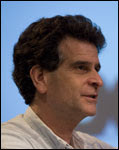 “If you tell the world you’re going to do something and they go, ‘Yeah…?’ it’s probably that you’re making an incremental change in something that the world is already doing reasonably well,” said renowned inventor
“If you tell the world you’re going to do something and they go, ‘Yeah…?’ it’s probably that you’re making an incremental change in something that the world is already doing reasonably well,” said renowned inventor 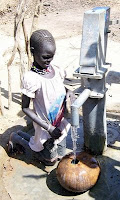 A record-breaking 28,000 people, including five heads of state, participated in the
A record-breaking 28,000 people, including five heads of state, participated in the  U.S. journalists “are by and large dying for the opportunity to go overseas and learn about a whole range of issues, from refugees to human rights,” but often lack the support of their editors—the “gatekeepers”—to do so, said Louise Lief, deputy director of the International Reporting Project (IRP), at a February 26, 2009, event, “
U.S. journalists “are by and large dying for the opportunity to go overseas and learn about a whole range of issues, from refugees to human rights,” but often lack the support of their editors—the “gatekeepers”—to do so, said Louise Lief, deputy director of the International Reporting Project (IRP), at a February 26, 2009, event, “
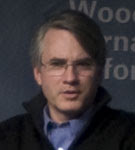 “In a developing country, what is it that moves people, that makes the economy grow?” BusinessWeek’s David Rocks wondered before visiting Uganda.
“In a developing country, what is it that moves people, that makes the economy grow?” BusinessWeek’s David Rocks wondered before visiting Uganda.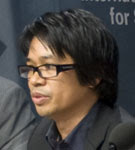
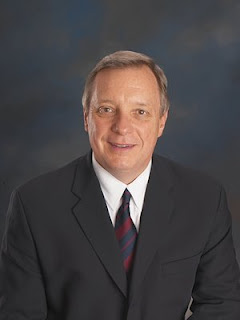 “Water access is no longer simply a global health and development issue; it is a mortal and long-term threat that is increasingly becoming a
“Water access is no longer simply a global health and development issue; it is a mortal and long-term threat that is increasingly becoming a 